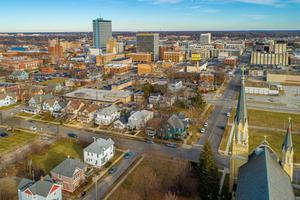Witness to Christian History in Vienna
Kahlenberg church commemorates monumental battle.

Kahlenberg typically shows up in the plans of most travelers to Vienna as a day trip outside of the city. In the early 20th century, it was a getaway for the urban masses for a Sunday-outside-of-town trip; in the early 21st century, it’s a photo op for visitors who want to capture on film the panorama of the Austrian capital astride the Danube, to see the “Vienna Woods,” and to make a stop along the way in Grinzing to sample the local wine culture.
Few visitors might notice the small church abutting the platform from which to get a snapshot of Vienna. The church, however, commemorates an important event in Christian history: Polish King Jan Sobieski’s defeat of the Turks at Vienna in 1683.
The Muslim conquest of Constantinople in 1453 brought the Eastern Roman Empire to an end and ushered in an era of Muslim expansionism throughout the Balkans, bringing them to the threshold of the Austrian capital. At that point, the Austrians turned to the Polish king to save the rest of Europe from the Balkans’ fate.
Setting out for Austria, Sobieski first made a pilgrimage to the Polish national Marian shrine in Czestochowa. Sobieski then spent the night of Sept. 11-12 in Kahlenberg. On the morning of the 12th, he attended Mass celebrated by the papal legate and then marched into battle.
Despite the odds being against him, Sobieski decisively defeated the Turks that day, forcing them away from Austria and Central Europe.
When Julius Caesar conquered Gaul, he advised Rome: “Veni; vidi; vici” (I came; I saw; I conquered). When Sobieski saved Vienna, he wrote to the Pope: “Veni; vidi; Deus vicit” (I came; I saw; God conquered). He also sent him the defeated sultan’s banner.
Having rescued Austria and Europe, Sobieski returned to Poland. The Austrians forgot the event and did not repay the favor: Less than a century later, they joined the Russians and Prussians in partitioning Poland, a division that lasted until 1918.
Over the years, the fate of the Kahlenberg church — St. Joseph’s — has taken many turns. When Sobieski arrived, the church — under the care of the Camaldolese — had already been attacked, first by the Swedes during the Thirty Years’ War and then the Turks. The monks eventually returned, only to leave in 1782, when Habsburg Emperor Josef II suppressed contemplative orders.
The church then changed various hands and was profaned by Napoleonic forces in 1809. Eventually, the Polish Resurrectionist order took it over in 1905, serving there ever since.
The church is a simple and small Baroque edifice, but it remains an active parish. Next to the church itself is a small museum that commemorates the events at Kahlenberg and explains their significance in Christian history.
Popes have honored the church for Kahlenberg’s significance for Christendom. St. Pius X sent a Marian painting to the church. St. John Paul II visited it on Sept. 13, 1983, the 300th anniversary of the Battle of Vienna. A plaque outside the church commemorates that papal visit.
Today’s visitor to Kahlenberg may travel there to photograph the scenery, but he is really standing on historic ground. Like the Battle of Tours in 732 or the Battle of Lepanto — commemorated each Oct. 7 — in 1571, the defeat of the Turks at the gates of Vienna once again saved Europe from progressive Muslim invasion.
King Sobieski saw his victory there as providential. Praying where Sobieski prayed, the Catholic traveler to Kahlenberg is also a witness to history.
John M. Grondelski, Ph.D., writes from Falls Church, Virginia.
Getting There
Vienna is served by air from many American cities. You can reach Kahlenberg on Vienna’s tram and local bus system (oebb.at) or as part of various tour companies’ itineraries, e.g., the “Hop-on-Hop-Off” green-line tour (ViennaSightseeing.at/en), which also includes the nearby Klosterneuberg Abbey.
- Keywords:
- john m. grondelski

















